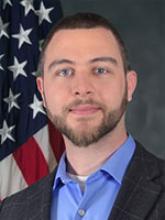Assessing Additive Manufacturing Process Heterogeneity
Date & Time:
Fri, 04/27/2018 - 2:30pm to 3:30pmSpeaker:
Edwin SchwalbachAffiliation:
Materials and Manufacturing Directorate, AFRL, Dayton, OHLocation:
Discovery Park B155
Abstract:
There has been increasing complexity in both additive manufacturing processes themselves (e.g. scan path planning, systems with multiple independent sources, and multiple heating modes) as well as the component geometries to which they are being applied. Fundamental questions about how these details combine to produce heterogeneity in local processing state, and therefore structure, will be addressed. Fast acting models and analytics procedures to assess and screen thermal history will be described. Potential applications for such capabilities include process-structure-property correlation development, processing equivalency testing, and potentially process design.
Additionally, we will describe a series of experimental activities and associated processing-to-structure modeling prediction challenge problems being performed within the Materials Informed Digital Design Demonstration for Additive Structures (MIDAS) program.

Biography:
Dr. Edwin Schwalbach is currently a Research Materials Engineer at Metals Branch, Structural Materials Division, Materials and Manfuacturing Directorate, Air Force Research Laboratory, Wright-Patterson Air Force Base, Dayton, Ohio. Dr. Schwalbach is responsible for performing in-house reachearch and monitoring several exteral projectes dealing with metallic additive manufacturing technologies. He is a member of the Material and Manufacturing Directorate's Additive Manufacturing Integrated Product Team. His background is in computational materials science, specifically development of microstructure evolution models. His current research is focused on metallic additivie manufacturing technologies for aerospace applications including powder bed fusion and directed energy deposition processes. Research efforts focus on the development and analysis of highly pedigreed process data to evaluate and ultimately improve a range of metallic additive manufacturing technologies and related process models. His research collaborations extend both internally across the Materials and Manufacturing Directorate and externally with organizations such as Oak Ridge National Laboratory.
Department:
Materials Science and Engineering